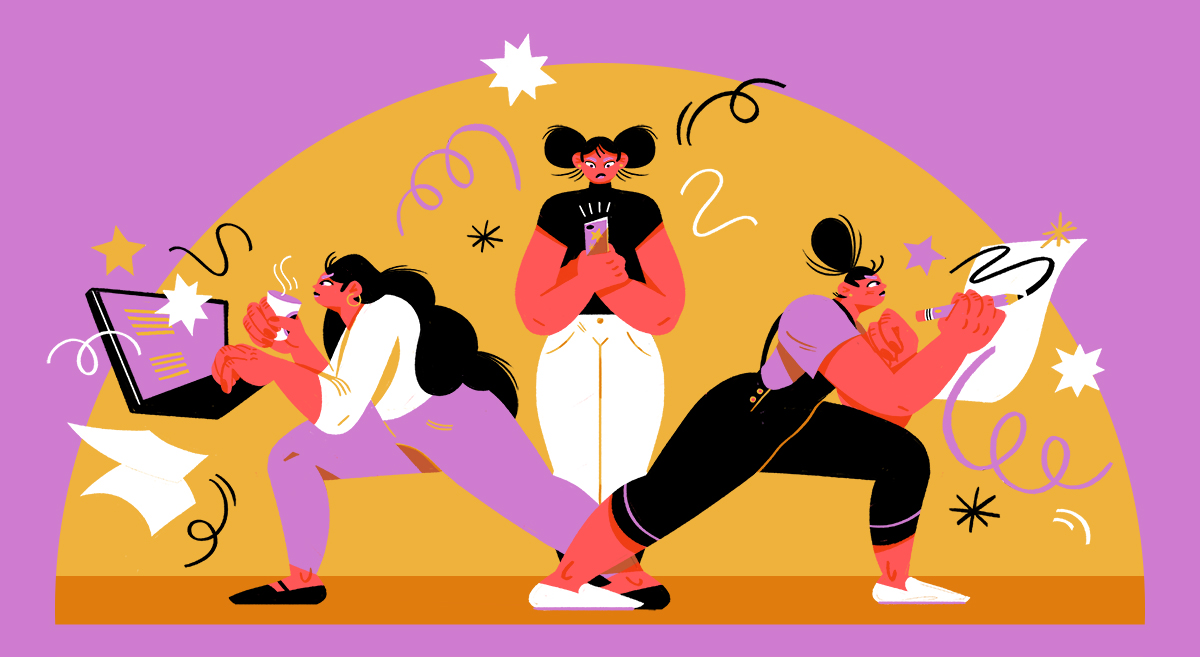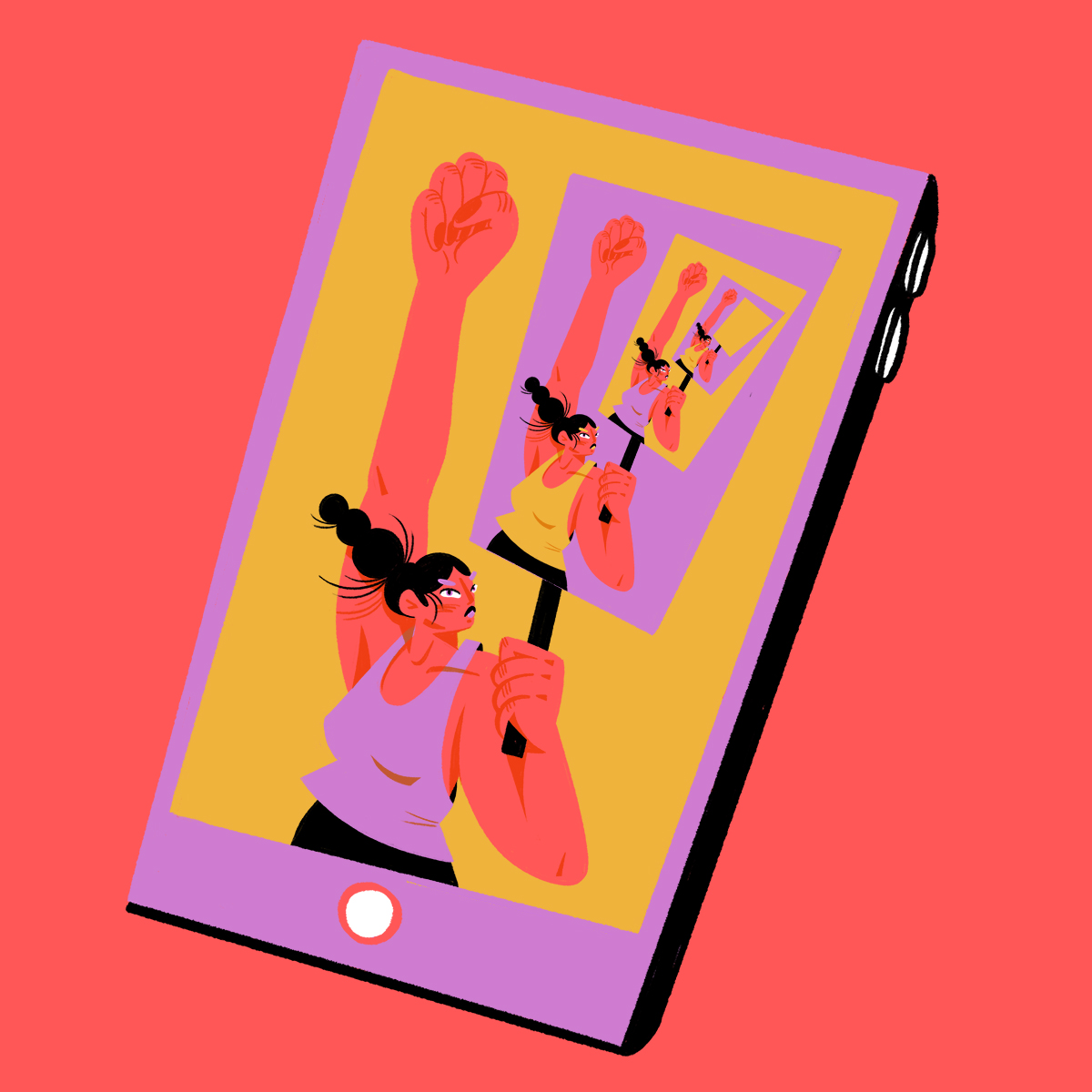
Illustration by Hayley Powers Thornton-Kennedy for Brown Paper Bag
During the second week of July, I was fortunate to attend ICON10 in Detroit, Michigan. ICON, also known as the Illustration Conference, gathers every two years and boasts workshops, illustrator talks, and panel discussions about topics that pertain to the field. I’ve been attending ICON, in various forms (as a volunteer, working on behalf of a sponsor, and as an attendee), for years; ICON10 was the fourth iteration of the conference I’ve been to. I always am curious to see how the programming will change, because a lot in the illustration industry has changed since I got my undergrad degree in 2008.
There were many parts of ICON10 that I enjoyed, but one of the presentations I found the most illuminating of this era we’re in was called When Worlds Collide: The State of Freelance Illustration. It featured: Marti Golon, an art director for Reader’s Digest magazine and books; Vandana Taxali, a lawyer and art agent; Robert Hunt, an illustrator; and Robert Newman, the moderator, who is the creative director for This Old House. The panel, made up of industry veterans, spoke on how the field of illustration has changed over the past 20 years.
We’re in a new “golden age” for illustration with the rise of social media, new technology, and the recent #MeToo movement. These factors are working to make the industry accountable for how image makers are hired and treated.
So with that in mind, here are several things that came up during the panel—from how illustrators market themselves to representation within the industry to how technology like the blockchain can aid us in protecting our work. Scroll down to read them.

Illustration by Hayley Powers Thornton-Kennedy for Brown Paper Bag
Your best bet for marketing yourself is online. This makes me sound old, but when I was in school for illustration, marketing yourself was all about the postcard; you’d find an art director’s physical address and send quarterly mailings reminding them of your work. Now, it’s all done online with a big thanks to social media. It’s also made the market global. “I’m working with people in [places like] Hungary [and] Japan,” Marti remarked, “because I think with technology now, it doesn’t really matter where someone is to do a job for me.”
Anyone who has used Instagram probably knows that it’s one of the best—and most powerful—ways to market their work and make meaningful connections with those who will hire you. But be sure to keep your website current, too and don’t remove your old pieces right away. Many art directors will bookmark a specific piece of yours, knowing they might use your work down the line. If they refer to that piece six months or a year later and it’s gone, they’ll often move along to the next available illustrator.
Another good idea? A newsletter! Send a quarterly newsletter of your newest works. It has officially replaced the postcard.
Keep an eye on new technology. You might’ve heard of blockchain technology; it’s what cryptocurrencies like Bitcoin are built on. Without getting too into the nitty-gritty, it’s a digital ledger that’s recorded publicly and chronologically. The blockchain database is hosted by millions of computers simultaneously, meaning that there’s no centralized version and it can’t be hacked. So, how does this translate for illustration? “You can upload [your work] to a blockchain and have almost a copyright registration,” Vandana said. “Right now, in the U.S., there are limitations on registrations of copyright and it gets expensive, for all the works that you create, to register all that. [But with the blockchain], you can have evidence of the time that you put [it] on [the blockchain].”
Our use of blockchain, as illustrators, will only grow more sophisticated with time. “We’re going to see… a lot of artists creating new monetization through the blockchain,” Vandana speculated, “and having a digital identity that you can sit down, put it online and track it, license it, and execute smart contracts.”

Illustration by Hayley Powers Thornton-Kennedy for Brown Paper Bag
Representation matters… We’ve seen some of the biggest shifts in how subjects are getting illustrated and by whom. It’s no longer just white dudes illustrating stories about women and people of color. There’s a growing movement to hire illustrators who fit the background of the job in which they are making art for. It’s important; it adds a level of authenticity to the work and gives a voice to groups who are marginalized.
“There’s been an effort,” Hunt remarked. “I think by pretty much all the stakeholders in the illustration world to bring a greater level of diversity to illustration. My experience [as a white man] was for a long time is I would get jobs and I looked at illustration purely as a meritocracy. You would get an assignment and you would want to do it to make the best picture.” He recounts illustrating a book about Korean Americans. “I wouldn’t do that now. There’s somebody more qualified to do that. I feel like a lot of people are aware of that that people need to bring their own identities and experiences to the work.”
… and so does using your voice. Your identity and experiences can be powerful elements to incorporate into your illustrations by adding a nuanced view to complicated issues. “Be a person with empathy.” Hunt said, “You have to have empathy for your audience.”
An illustration is a vehicle for empathy—for sharing the stories and experiences of people in a way that readers can understand and connect with. Kaylani Juanita created this portrait of Nia Wilson, an 18-year-old black woman who was fatally stabbed by a white man while waiting for the BART in Oakland. This illustration, coupled with a quote from Nia’s sister Latifa, is a way to express for Kaylani to express her grief, confusion, and anger while paying tribute to a woman slain in a senseless murder.
And in the age of Trump, illustration has played an even greater and vital role in resisting his administration’s tyranny. Social media, aside from marketing, is a powerful way to distribute imagery and information that actively helps us #resist. Hayley Powers Thornton-Kennedy, the illustrator who created the images for this article, has created protest posters that she’s made available for free download through Gumroad.
Freelance illustration is a delicate balancing act. It’s up to you to figure out what you want to say. How will you use your voice? How will you participate in your creative community? Beyond heart, there’s also practicality—the boring (and uncomfortable) stuff like your rates, negotiating contracts, and paying taxes. (Second opinions from trusted friends and colleagues will help you with this.) They are all things to consider when you’re a freelance illustrator.
While large conferences and the panels are great, they only happen every so often. Keep your ear to the ground and listen and participate in what your community is saying and talking about. You’ll help evolve the field of illustration.
